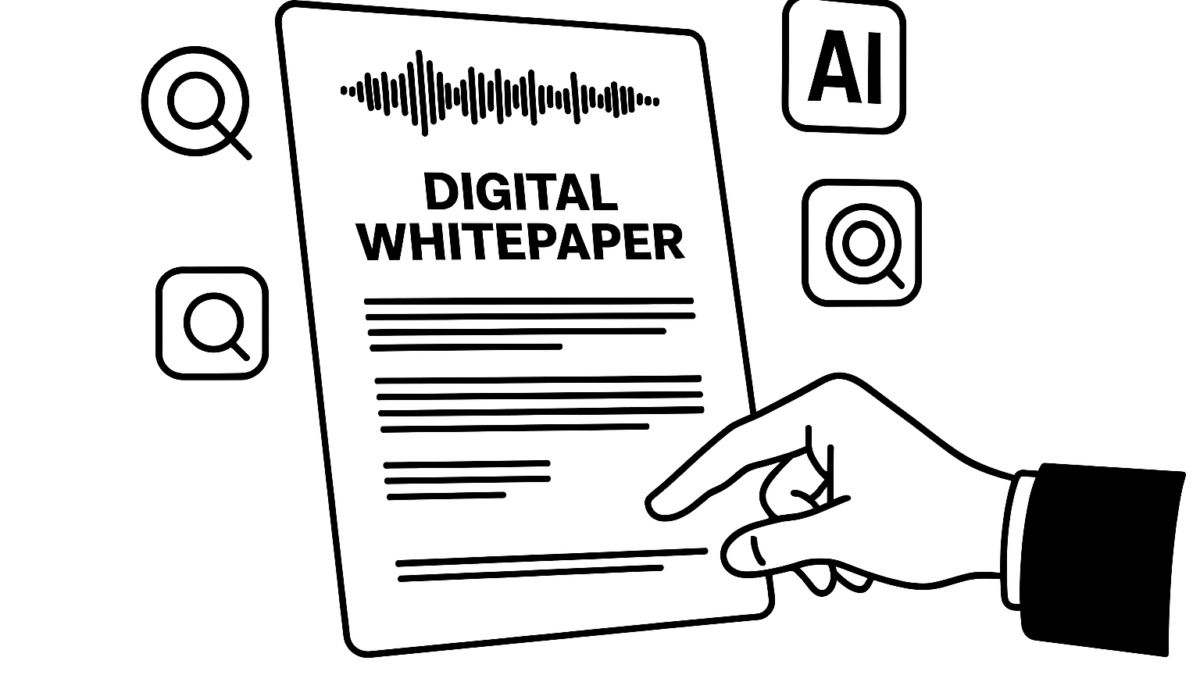Table of Contents
Introduction
The way people search is changing rapidly. From smart speakers and AI chatbots to visual-first platforms like Google Lens and TikTok, today’s digital experience is less about typed keywords and more about context, images, and conversation. For B2B marketers and content creators, that raises a critical question: Are your whitepapers prepared for the future of search?
In 2025, if your content isn’t optimized for voice and visual discovery, it risks being invisible to the very buyers you’re trying to influence.
The Rise of Voice & Visual Search
Voice search now accounts for nearly half of all online searches, and platforms like Google, Siri, Alexa, and ChatGPT are only accelerating that shift. On the other hand, visual platforms such as Pinterest Lens, Google Lens, and even Instagram are being used to find products, compare services, and discover solutions—yes, even in B2B.
At the same time, AI-powered summarizers and generative search engines (like Google’s SGE and ChatGPT) are parsing content differently than traditional crawlers. If your whitepaper is just a static PDF with no metadata, guess what? It’s probably not even being read.
Why Traditional Whitepapers Are Failing in Search

The standard whitepaper format—a downloadable PDF hidden behind a form—was designed for email captures, not discoverability. These PDFs often:
- Lack semantic structure (no headings, no alt text, no schema)
- Don’t render well on mobile or voice interfaces
- Can’t be parsed easily by AI search bots
This makes your content invisible to search platforms where modern buyers are actively looking.
How to Make Your Whitepapers Search-Ready
Here are some actionable steps to prepare your content:
Break Up Your Content
Whitepapers should be modular. Instead of a 20-page monolith, structure it into:
- Executive summaries
- Key findings as bullet points
- Short, digestible chapters
Add Voice-Search Metadata
Use tools like schema.org markup to highlight:
- Questions and answers
- Definitions
- Summaries
Prioritize Accessibility
- Add alt text to all images
- Use descriptive headings (H1, H2, H3)
- Make sure it’s mobile and screen-reader friendly
Optimize for Visual Discovery
- Use clean, branded images
- Include infographics and data visualizations
- Create shareable visual snippets
Embrace Interactive Formats
Instead of a static PDF, consider interactive whitepapers that:
- Live on your site (not just behind a form)
- Are crawlable by Google
- Allow voice and AI assistants to extract summaries
The Role of AI in Content Discovery
With Google’s Search Generative Experience (SGE) and tools like ChatGPT browsing the web, content is being interpreted differently. AI looks for:
- Structured content
- Clear summaries and highlights
- Contextual keywords, not just exact matches
If your whitepaper has none of those, AI simply skips it.
Real-World Example: Before vs. After
- Before: A B2B software firm published a 15-page PDF whitepaper gated behind a form. It got 60 downloads in 6 months.
- After: The same content was restructured into an interactive whitepaper with chapters, voice-search summaries, and schema markup. It ranked on Google, was referenced by AI tools, and generated over 300 engaged reads in 90 days—without a form.
The Future Is Searchable, Accessible, and AI-Ready
If your whitepapers still live in static PDFs, you’re missing out on the way your audience discovers, consumes, and shares content. Voice and visual search aren’t just consumer trends—they’re now core to B2B discovery journeys.
Call-to-Action
Your best content shouldn’t be invisible to search.
At Whitepapers Online, we help you turn static assets into AI-ready, voice-searchable, and interactive content experiences.
You May Also Like: From Clicks to Conversions: How Content Syndication Powers Scalable B2B Growth





